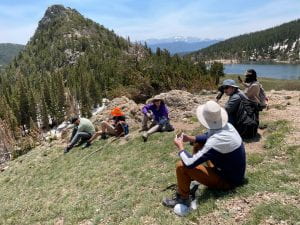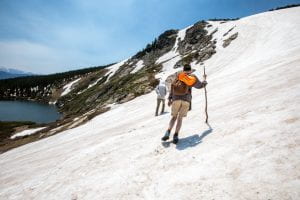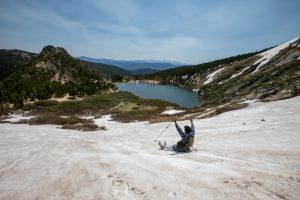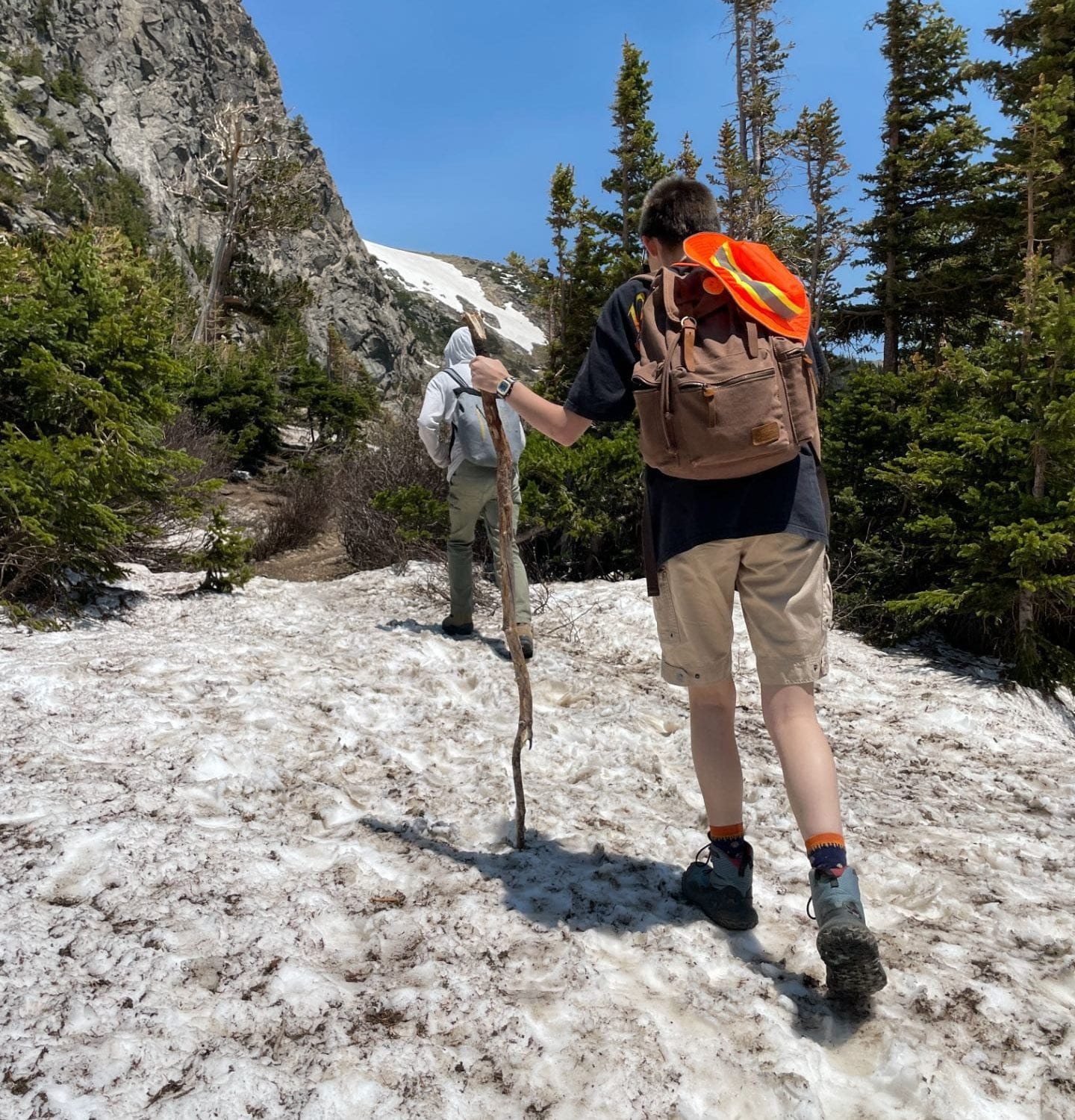
At 9 am this Monday morning, the group piled into the van and headed to St. Mary’s Glacier. The goal for today: understand the interactions between glaciers, snowfields, the landscape, and climate change. On the drive, our Ph.D. instructor for the day Zhuoya He explained the importance of glacial melting to human life, including the amount of water provided to the cities nearby and the regulation of Earth’s various environments. She informed us that although St. Mary’s cannot currently classify as a glacier, landforms formed by glacial processes in the past were still present at the site.
We parked, checked for hats and water, and then started our trek up the mountain trail. As we got higher in elevation, I began to see snow on the slopes nearby. Upon reaching St. Mary’s Lake at about 10,100 ft in altitude, we sat on logs for a while and admired the gorgeous view of the snowfield. To my surprise, I saw kids taking a polar plunge in the freezing water! Someone should give them a medal for that. I’d like to say I would’ve joined them, but realistically you would have to pay me a very large sum.
Heading out again, we crossed a bridge over a shallow stream sourced by meltwater where algae and moss were growing and visibly photosynthesizing. As we climbed higher, we stopped to admire the gorgeous schist that was present. Working together with the graduate students, molybdenite, feldspar, quartz, biotite, and epidote were all identified within the rocks. I loved seeing the different mineral growths and slipped a couple samples into my bag.

We continued up to the base of the snowpack and found a grassy hill to eat and admire the view. The snowcapped mountains towering over the lake were a breathtaking sight, one I wish I could see every day. As we snacked, a chipmunk was spotted prancing across the landscape. I suspect it caught a whiff of our sandwiches. After filling our bellies, we scoped out different glacial features like moraines, cirques, and U-shaped valleys present in the topography. We were able to see meltwater flowing underneath patches of snow, the surface unaffected by the liquid undermining.
Zhuoya helped us set up a thermal camera attachment with our phones to measure the temperatures of the mountain across the varying terrain. With this tool, it was super easy to see the difference in albedo between the snow, rocks, and vegetation present. The icy areas were much darker, showing a lower temperature and higher albedo, while the green shrubs appeared yellow.

Finally, we traversed onto the snowpack, having to firmly plant our feet into the snow to avoid slipping. It was so fascinating that I could comfortably wear shorts while being surrounded by frozen terrain. Of course, a snowball fight was unavoidable. If anyone asks who won, tell them it was me! To descend the slope, we transformed into human sleds and zoomed down on our backs. The wet pants we had on the drive home were totally worth being able to say that we slid down St. Mary’s Glacier, and I don’t think any of my comrades would disagree.


Post by Gabi Burke
